11 Purple Flowers to Make Your Garden Look Elegant
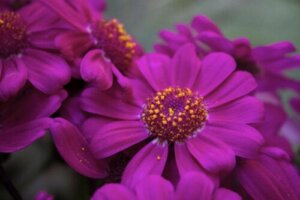
Why should the color purple never be missing from your garden? You probably agree that, besides being attractive and very showy, purple flowers inspire a sense of calm and peace.
That’s why those who like gardening always choose a variety of these plants to harmonize their gardens. On the other hand, according to the language of flowers and color psychology, these colors have to do with respect, success, and nostalgia.
These are all positive connotations that contribute to a balanced and colorful garden. Let’s take a look at the 11 purple flowers you should know about to spruce up your outdoor spaces.
1. Lavender
We start with a classic that’s very well-known. Although there are more than 30 species of lavender, the most common is Lavandula officinalis. Its fragrance is unmistakable and it’s one of the most widely used aromatic plants in the manufacture of essences, body oils, and perfumes, as reported in an article in Phytochemistry Reviews.
Why is it so well known? Because it’s rather rustic, very easy to grow, and covers space very quickly, without the need for reseeding and replanting. It likes to be outdoors and gets along well with cold winter temperatures.
You can plant them in soil or pots.
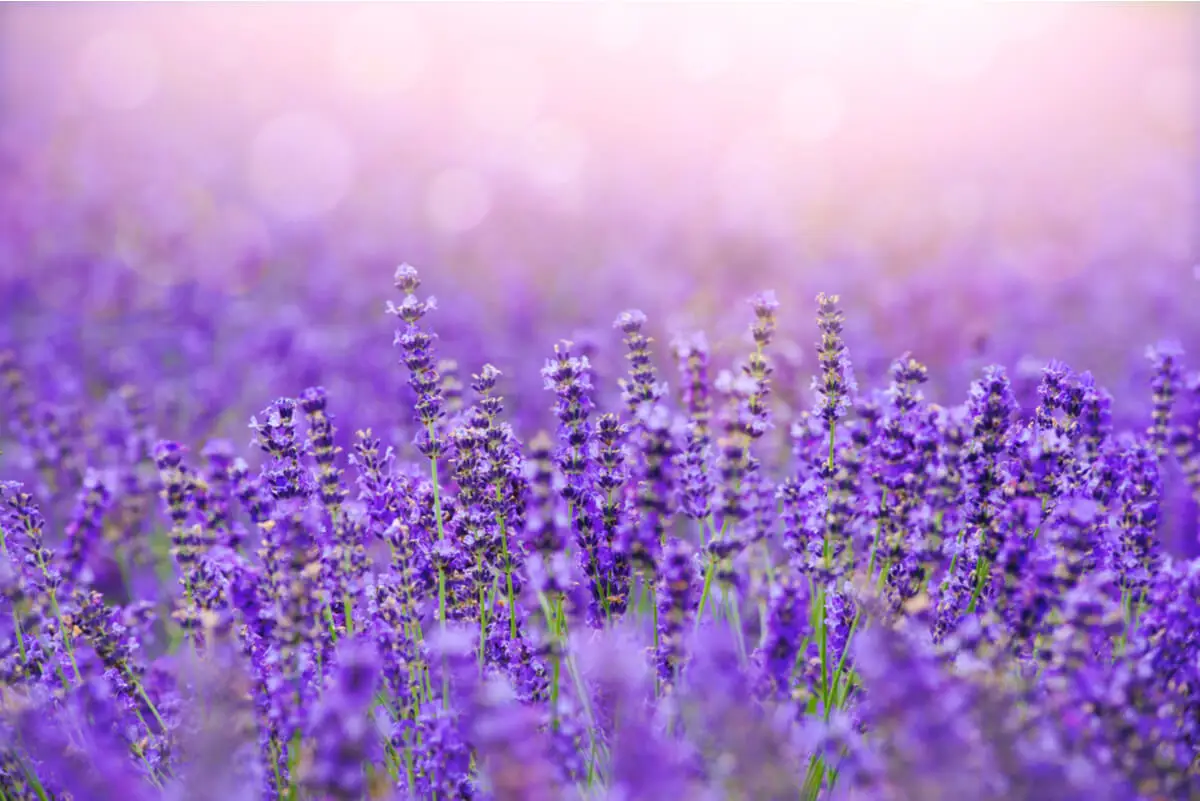
2. Petunias
The petunia has a trumpet shape. When it opens, it gives us some very colorful petals in which its purple color can be seen inside. Like lavender, it has a good reproductive capacity and covers a large surface area.
They grow up to 30 centimeters tall and grow perfectly in pots, as well as tolerating the cold well. Although the flower has no scent, the plant does give off a delicious perfume. The good news is that this is a very budget-friendly and versatile species, which doesn’t demand too much care.

3. Saffron
Its scientific name is Crocus sativus and it’s a bulky plant that is usually sown in autumn to give its first flowers in spring. The flowers open for only two to three days and measure 7 centimeters.
The saffron spice, which is very expensive, is obtained from this plant. This is extracted from the stigmas of the flower, which are red and very intense.
To give you an idea of why its value is so high, only one kilo of saffron is obtained from half a million flowers.
This species enjoys both sun and shade and indoor spaces. It’s very decorative, making it one of everyone’s favorite purple flowers.
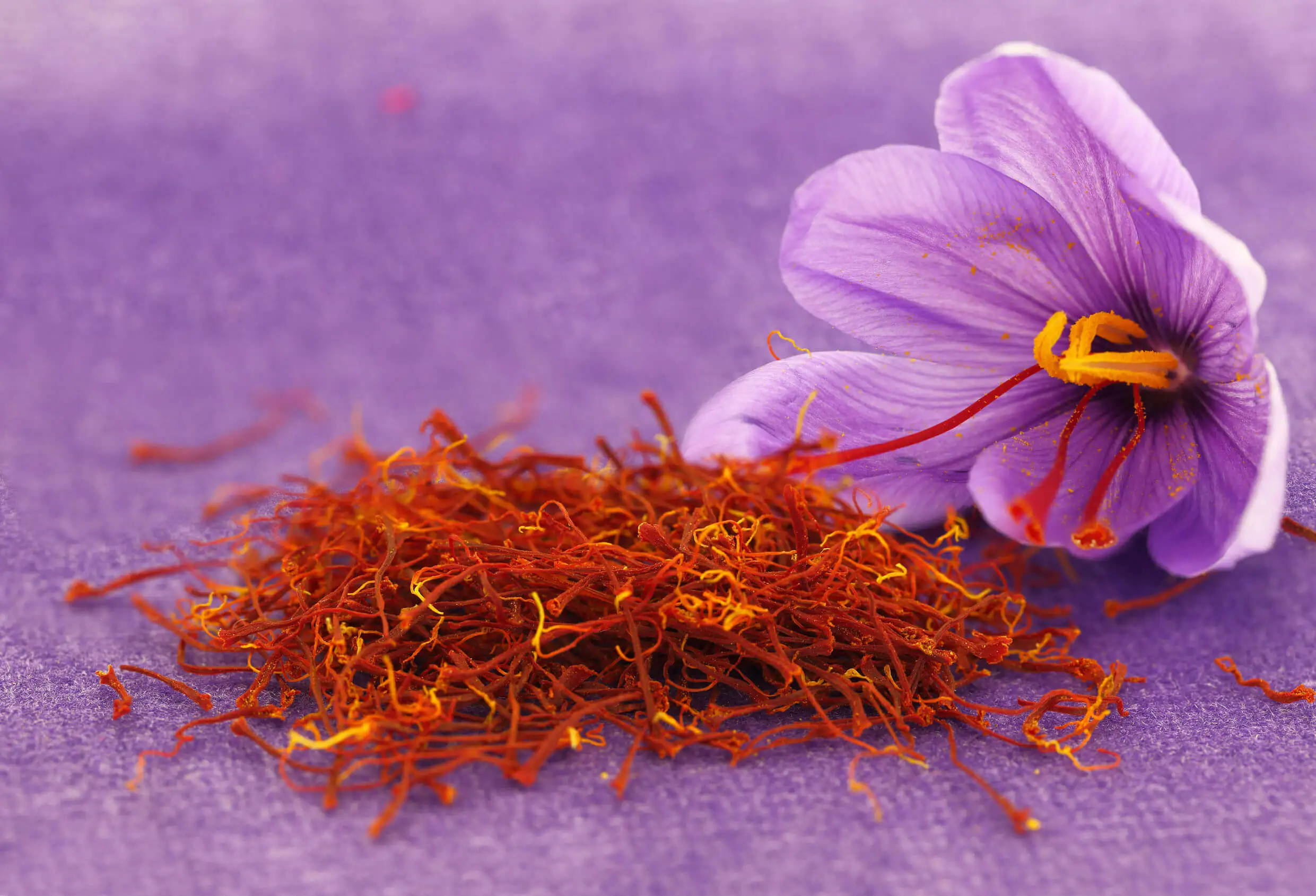
4. Thimbleweed
This is a rather wild plant, clustering in clusters and growing in temperate climates in both Europe and the Americas. Also known as Digitalis, its flowering cycle is biannual, that is, it finishes after two years.
However, it’s worth the wait. When it blooms, it exhibits violet flowers that hang in the shape of bells with white spots.
The good thing is that its flowers last about three months. It can reach up to 1 meter in height, which makes it a very special ornamental plant.
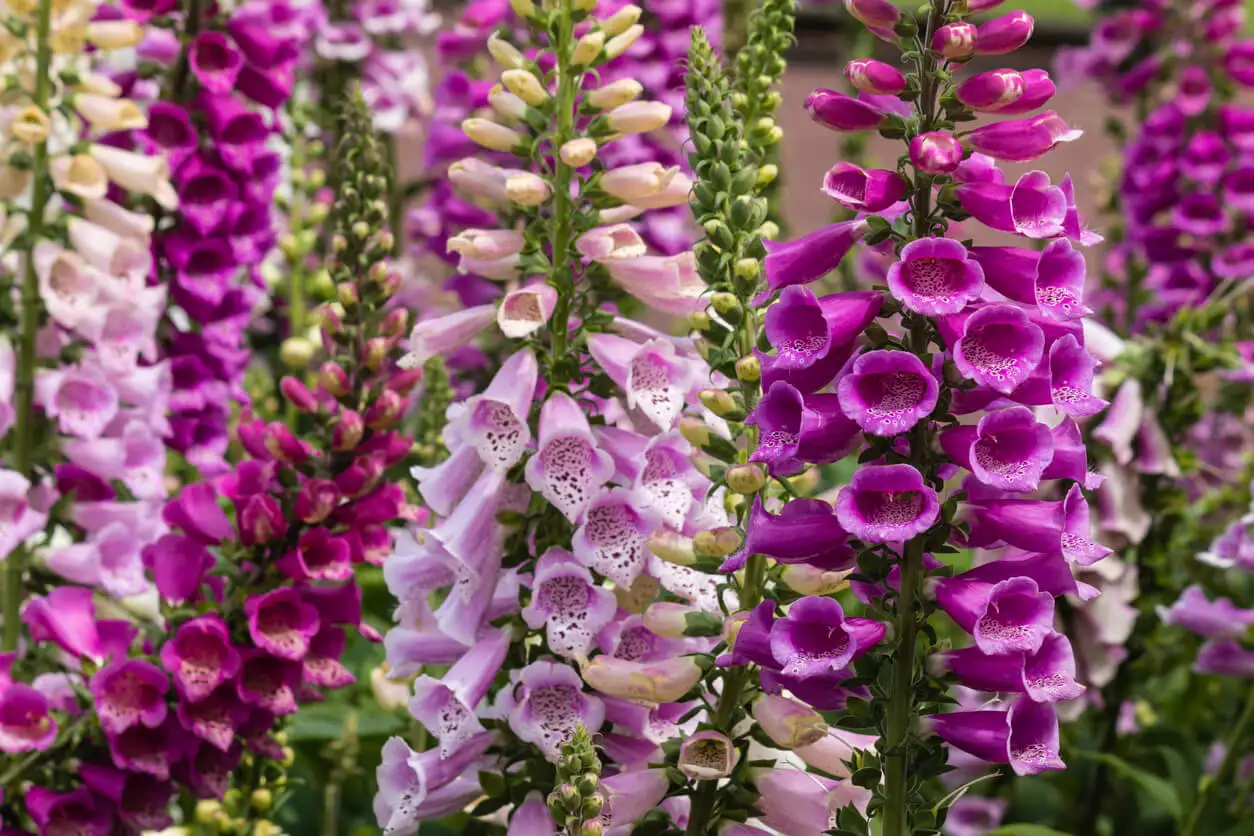
We think you may also enjoy reading this article: Is It Possible to Change the Color of Flowers? Try this Method at Home
5. Dimorphotheca
Native to Africa and in the cover photo, this is a plant that develops its stem internally and reaches a few centimeters. We can also say that it’s perennial; after leaving the seed, it dies after two years.
It’s characterized by its excellent ability to cover soils and gives as an effect a beautiful purple carpet that envelops the entire garden. It also grows very fast and, if you want to keep it under control, pruning is necessary.
Because of its resemblance to the daisy, it’s called a “violet daisy.”
6. Lilies
Lilies bloom in spring and live for two years. Their leaves can reach 30 centimeters long and they adapt to almost any environmental condition. In this sense, it will grow well both outside and inside your home.
Its flower is known to be very hardy. This is because its stems are thick and store a good amount of nutrients, which the flowers will draw on to keep themselves upright.
The flowers appear to form a natural fan of a deep violet hue. Their fragrance is widely used in the perfume industry.
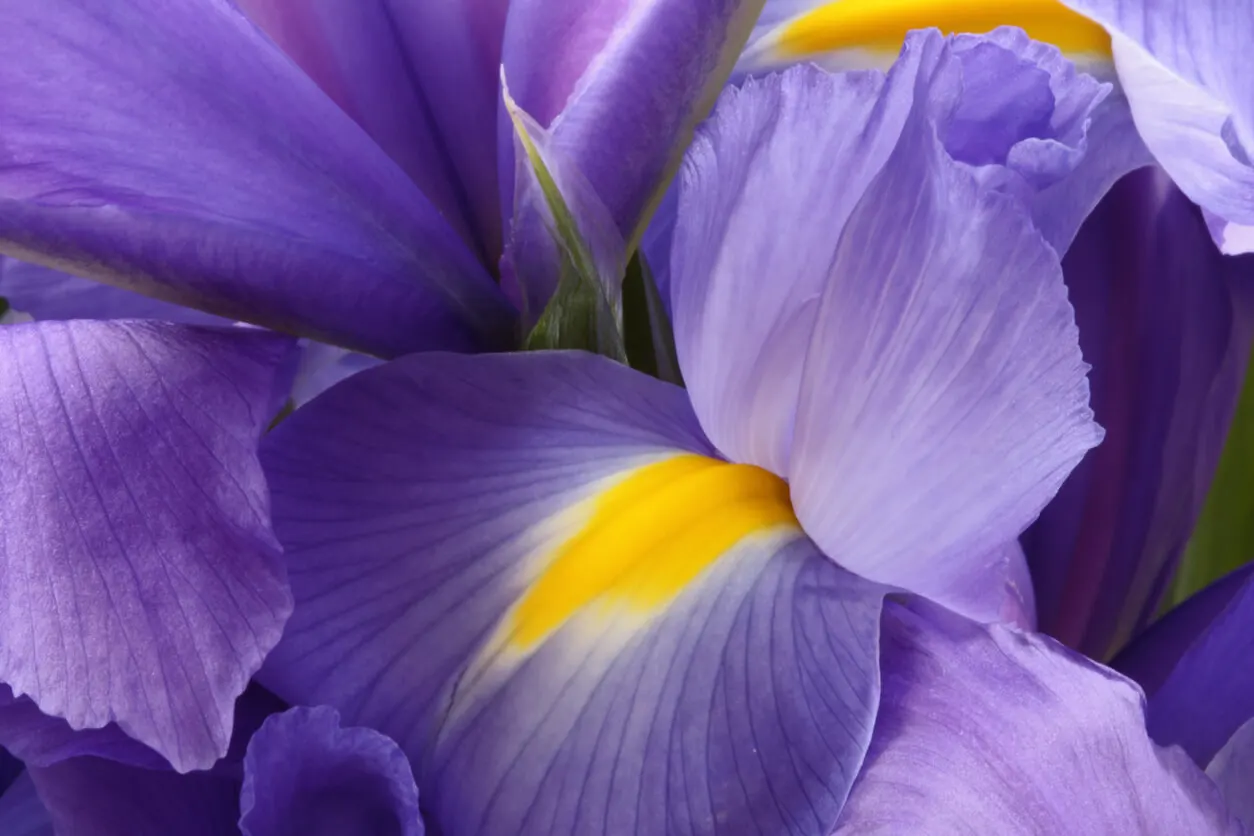
7. Flaming star
It’s also known as snakeroot or painter’s brush. These flowers, in addition, can be blue or pink.
They are grouped in the form of spikes, thanks to their stems growing vertically. They grow to a little more than one meter long and can be cultivated both in soil and in pots. According to botanical studies, it’s a plant suitable for growing with vermicompost.
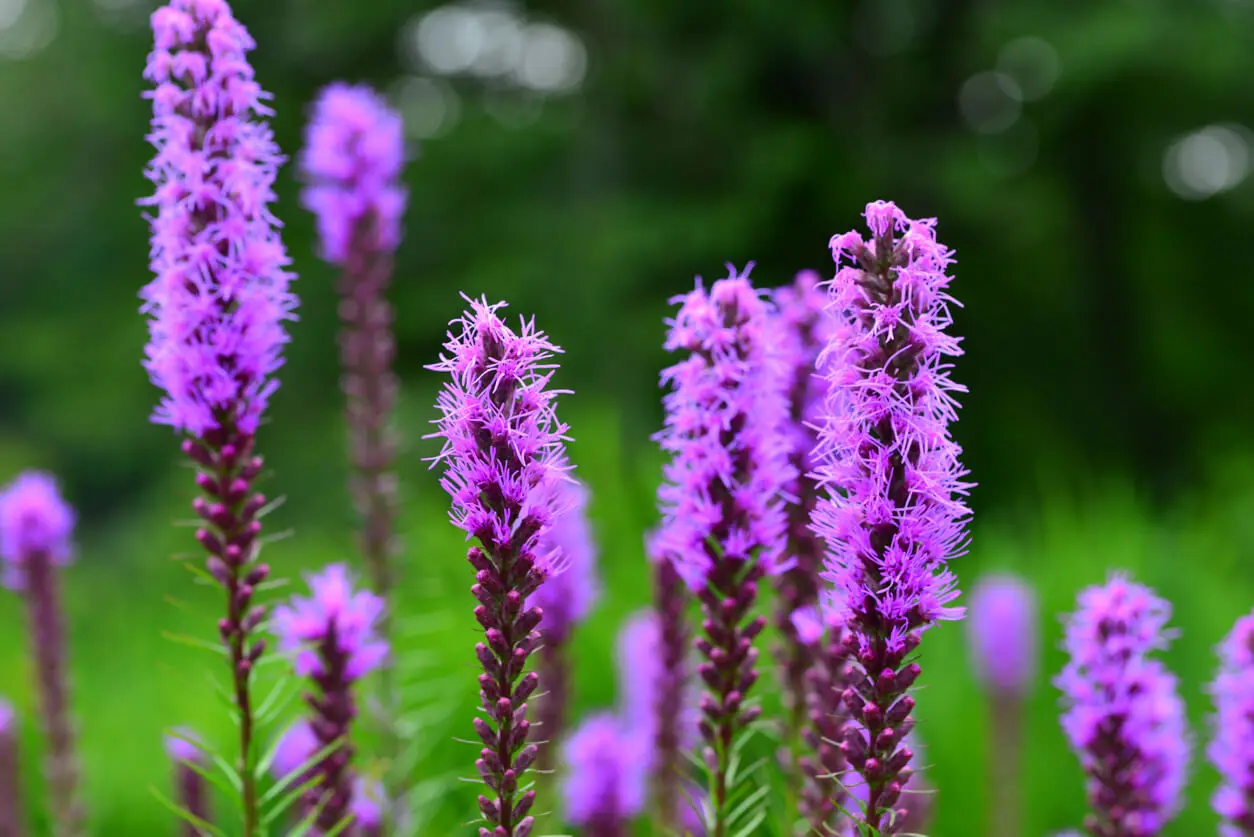
8. Bougainvillea
In some regions, it’s known as Santa Rita or veranera. It’s a plant that can be cultivated as a climber or vine, or as a shrub.
It has an incredible ornamental value. It can reach up to 12 meters high and cover walls, fences, and wire fences.
Actually, the purple color is in its bracts or leaves. The flowers, on the other hand, are tiny and yellow, located in the center of their attractive leaves.
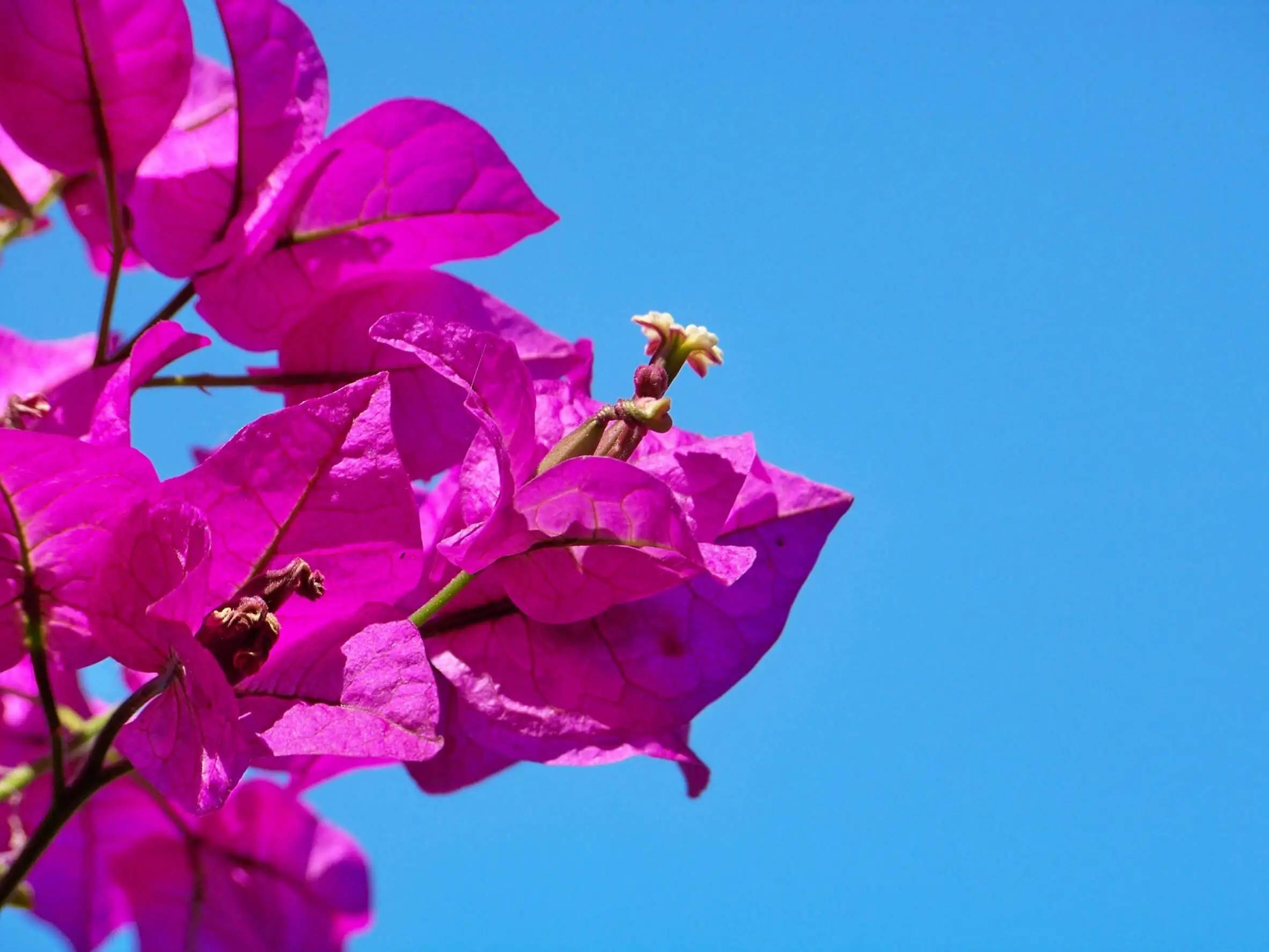
From the leaves, specifically, extracts with certain medicinal actions are obtained. This is detailed in an article in Ars Pharmaceutica.
9. Forget-me-nots
These are perennial plants, whose purple flowers are grouped together to give a very elegant and fresh visual effect. It’s a New Zealand species and there are over 50 varieties.
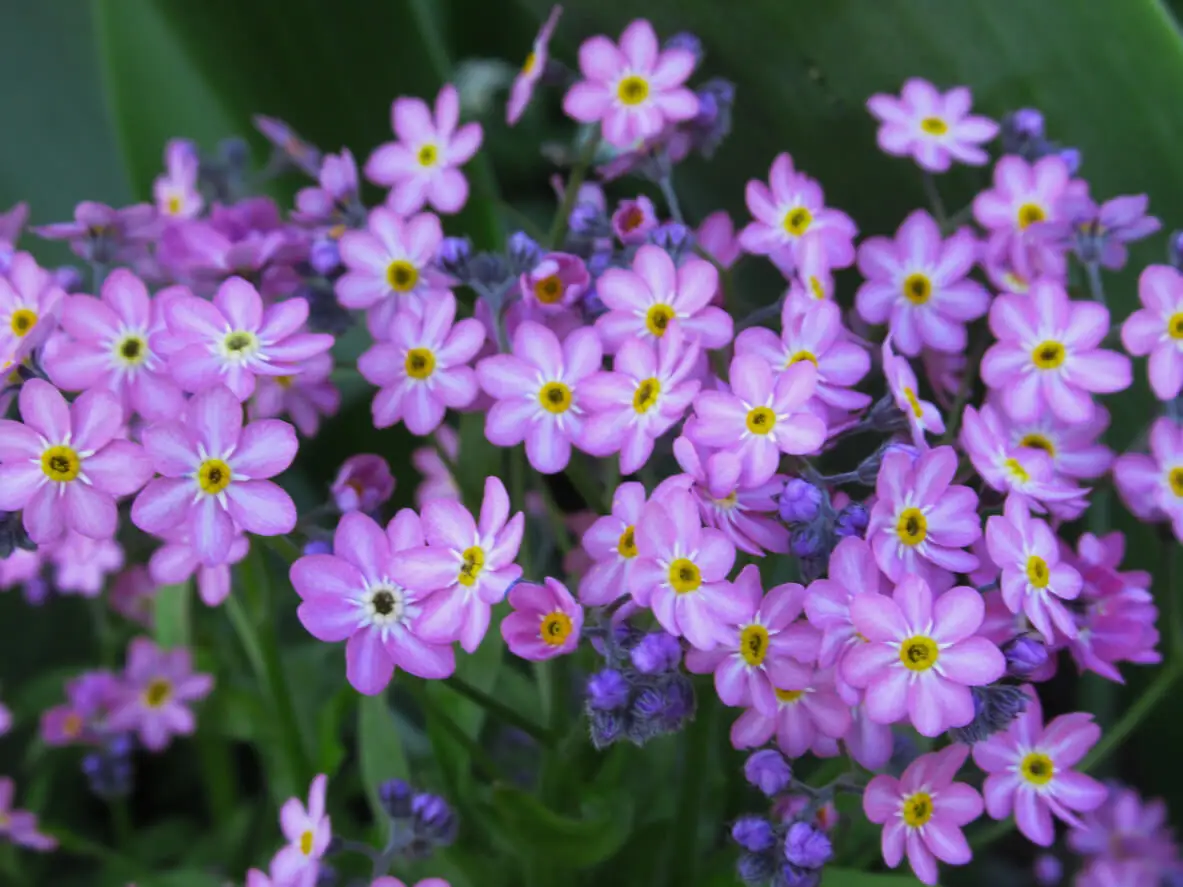
10. Hydrangeas, one of the busiest purple flowers
Hydrangeas will give your garden personality and originality. They bring volume, color, and life to the space they occupy.
They expand quickly. They should not receive direct sunlight. This species is available in white, lilac, pink, and blue.
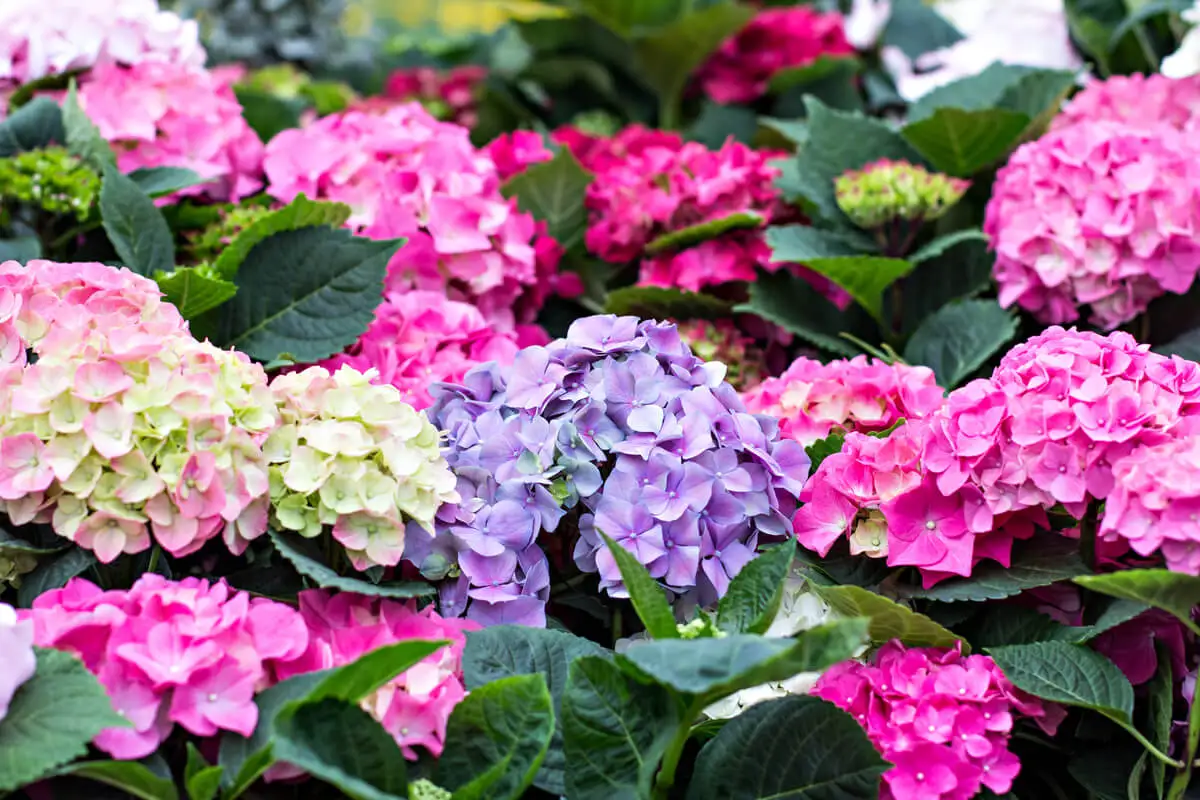
Like this article? You may also like to read: A Care Guide for Vinca to Fill Your Garden with Flowers this Spring
11. Succulents
Succulents are often one of the favorites of many because they require practically no care. They need very little watering, and any place suits them.
A special mention deserves the variety Aeonium arboreum. The dark violet of this succulent generates interest in anyone who passes by.
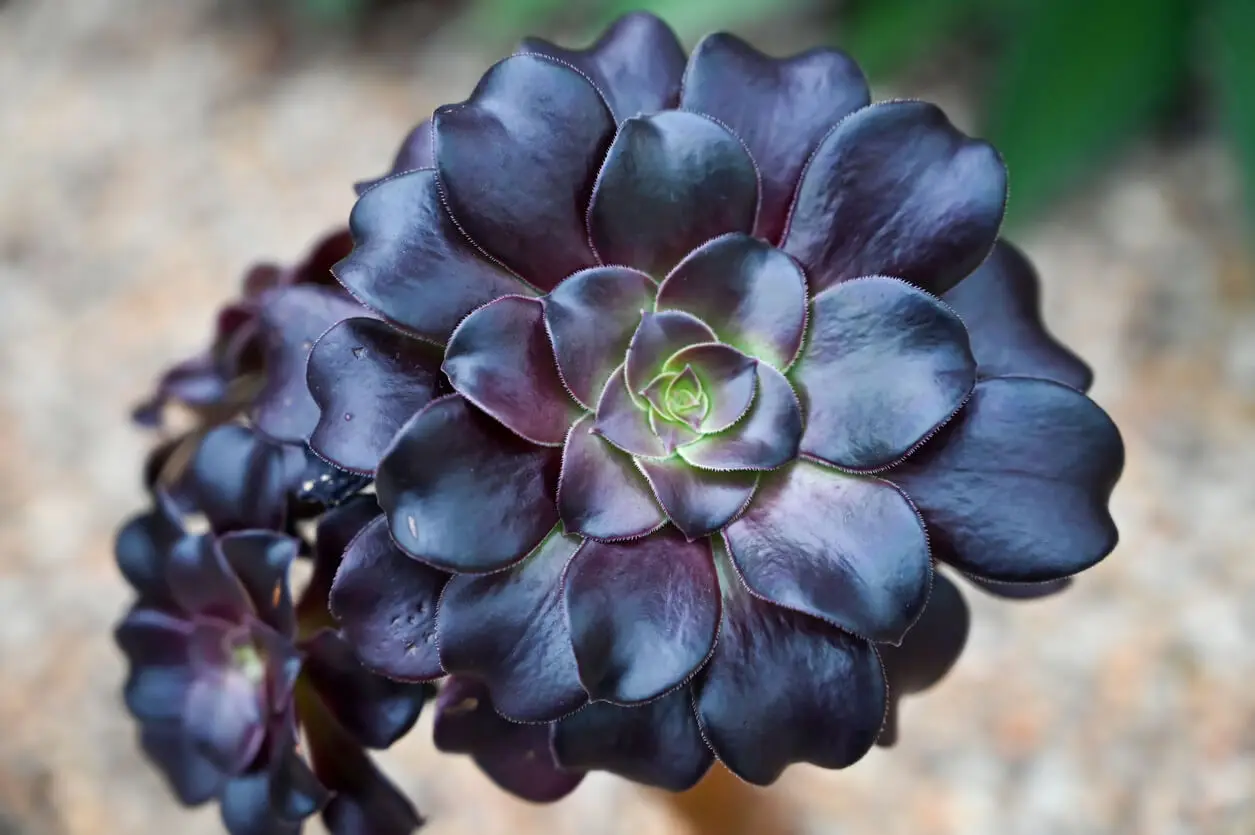
Purple flowers are an excellent choice for your garden
As much as they’re united by their color, each purple flower is unique and requires different care. However, a common denominator seems to be the need for good natural light and the intensity of their purple tones.
This shade conveys harmony and tranquility. It’s very elegant and has variations to play with combinations in the garden. In addition, it’s common for these purple flowers to be part of bridal bouquets and bouquets.
All cited sources were thoroughly reviewed by our team to ensure their quality, reliability, currency, and validity. The bibliography of this article was considered reliable and of academic or scientific accuracy.
- Aprotosoaie, A. C., Gille, E., Trifan, A., Luca, V. S., & Miron, A. (2017). Essential oils of Lavandula genus: a systematic review of their chemistry. Phytochemistry Reviews, 16, 761-799. https://link.springer.com/article/10.1007/s11101-017-9517-1
- Edwin, E., Sheeja, E., Toppo, E., Tiwari, V., & Dutt, K. R. (2007). Efectos antimicrobianos, antiulcerosos y antidiarreicos de las hojas de buganvilla (Bougainvillea glabra Choisy). Ars pharm, 135-144. https://revistaseug.ugr.es/index.php/ars/article/view/4981
- James, E. C., & van Iersel, M. W. (2001). Fertilizer concentration affects growth and flowering of subirrigated petunias and begonias. HortScience, 36(1), 40-44. https://journals.ashs.org/hortsci/view/journals/hortsci/36/1/article-p40.xml
- Ortiz, D. G. (2009). Plantas ornamentales de Noguera (Teruel): angiospermas dicotiledoneas (II). Rehalda: Revista del Centro de Estudios de la Comunidad de Albarracín, (11), 67-83. https://dialnet.unirioja.es/descarga/articulo/3097850.pdf
- Srivastava, R., Ahmed, H., Dixit, R. K., & Saraf, S. A. (2010). Crocus sativus L.: a comprehensive review. Pharmacognosy reviews, 4(8), 200. https://www.ncbi.nlm.nih.gov/pmc/articles/PMC3249922/
- Szilagyi, C., Băla, M., & Toța, C. (2018). Technology sequences in Liatris spicata upon vermicompost use. Journal of Horticulture, Forestry and Biotechnology, 22(4), 94-97. https://www.cabdirect.org/cabdirect/abstract/20203432499
This text is provided for informational purposes only and does not replace consultation with a professional. If in doubt, consult your specialist.








